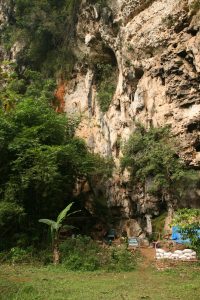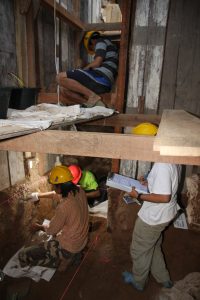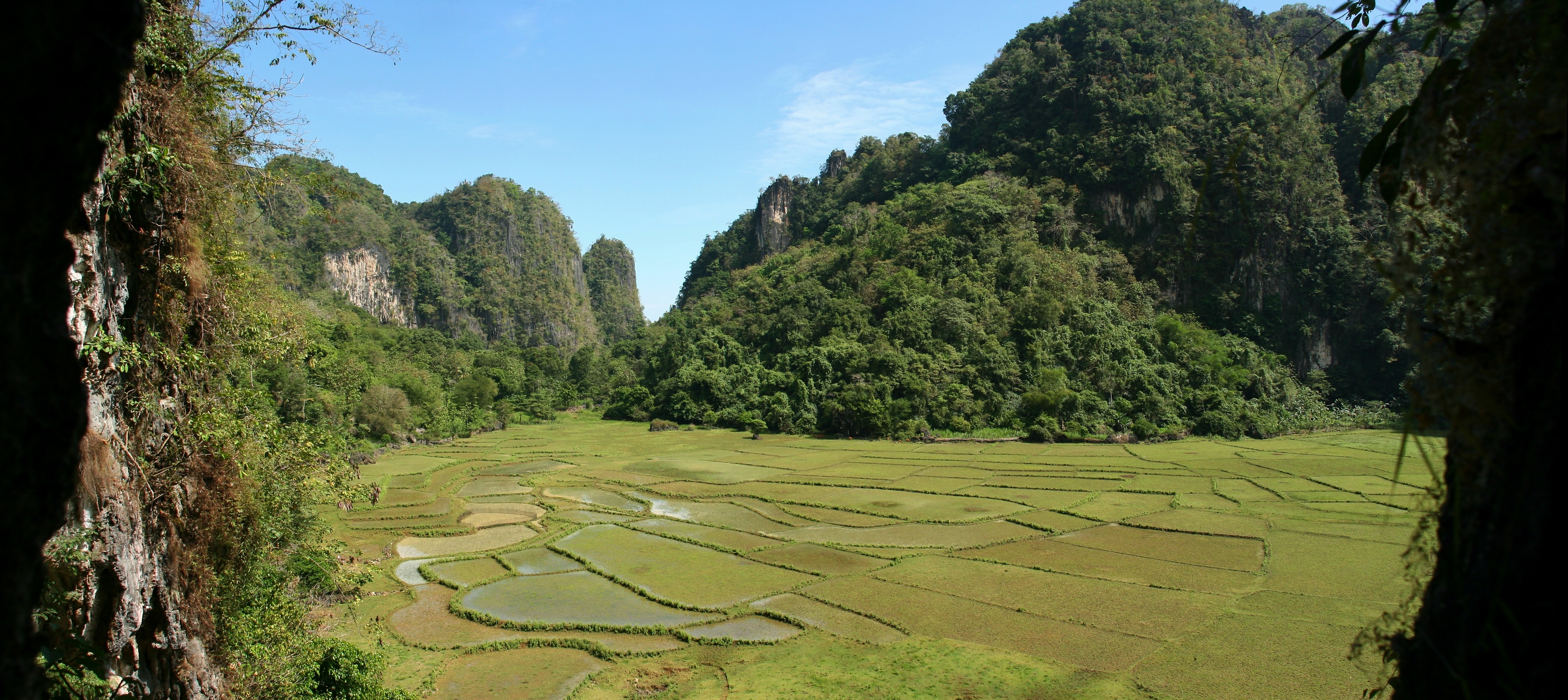Renewed excavations at a limestone rock-shelter inhabited by ‘Ice Age’ hunter-gatherers on the Indonesian island of Sulawesi have revealed new evidence for earlier human occupation, according to findings by Associate Professor Adam Brumm of Griffith University’s Australian Research Centre for Human Evolution (ARCHE), and colleagues from Indonesia’s National Research Centre for Archaeology (ARKENAS), published today in the journalPLOS ONE.
Sulawesi is the largest island in the ‘Wallacean’ archipelago, a vast chain of islands located between the separate Ice Age landmasses of Asia and Australia-New Guinea.

The rock-shelter at Leang Burung 2 in the Maros karsts of southern Sulawesi has long-held significance in our understanding of the early human prehistory of the lands to the immediate north of Australia.
In 1975, artifacts recovered at Leang Burung 2 by archaeologist Ian Glover were interpreted as evidence of occupation by modern humans between 25,000 and 34,000 years ago, but excavations were discontinued before bedrock or sterile deposits (i.e., layers lacking evidence for a human presence) were reached.
Brumm and colleagues returned to Leang Burung 2 between 2011 and 2013 to reassess the dating and interpretation of early findings and to dig nearly 3 metres deeper for more ancient materials. Their findings suggest that the upper layers of sediment were subject to intense disturbances and are of mixed age, and thus artifacts from the 1975 excavation may be younger than previously thought.
But in the newly excavated lower levels of the deposit, they discovered and dated archaic cobble-based cores and flakes that indicate human occupation at the site at least 50,000 years ago. These new stone artifacts provide key insights into the history of human occupation and cultural evolution across the Indonesian region.
In 2014, Griffith University researchers demonstrated that cave art in the Maros karsts date to at least 40,000 years ago, based on Uranium-series analyses of overlying mineral crusts. Recent excavations at Talepu, a site located 80km to the northeast of Leang Burung 2, had also unearthed simple stone tools in layers dated to 194,000 to 118,000 years ago. The identity of these tool-makers has remained enigmatic. However, the great age of the artifacts could suggest that Sulawesi was first inhabited by an archaic species of human (or a very early modern human population) that long preceded the arrival of the cave art culture.
While the identity of the earliest toolmakers at Leang Burung 2 is also uncertain, it is possible that these were the same early modern humans that produced 40,000-year-old paintings in neighbouring caves or they could be a separate population of more ancient humans. If the latter, whether these earlier inhabitants ever came into contact with modern human cultures, and the ultimate fate of the original population (i.e., when and how it became extinct), is unknown.

The researchers note that these recent excavations do not yet reach the lowest layers of the deposit beneath the level dated to 50,000 years ago, and that further exploration at nearby sites may recover even older remains of human occupation, as well as more dateable materials to confirm their preliminary age estimates.
“Leang Burung 2 is important because it was the first dated ‘Ice Age’ site in Indonesia. We have now returned to this rock-shelter and dug much deeper, showing that humans were present here by at least 50,000 years ago, which is earlier than previous studies suggest,” Associate Professor Brumm said.
“The identity of the site’s first inhabitants is a mystery. The early culture is very different to that of the modern human foragers who were creating cave art on Sulawesi 40,000 years ago. This island is located near the edge of the Asian continent, with its ancient population of Homo erectus, and north of Flores, home to the famous ‘Hobbits’. It is also thought that the so-named ‘Denisovan’ hominins, close relatives of the Neanderthals, were present somewhere in Wallacea. Based on findings in the wider region, therefore, it is possible that the first inhabitants of Leang Burung 2 were a now-extinct group that was later replaced by our species.”
“Further excavations on Sulawesi could turn up some serious surprises”, he said.
The Australian Research Centre for Human Evolution (ARCHE) is based within Griffith University’s Environmental Futures Research Institute. ARCHE conducts research into early human evolution, migration, and cultural change in our region.
